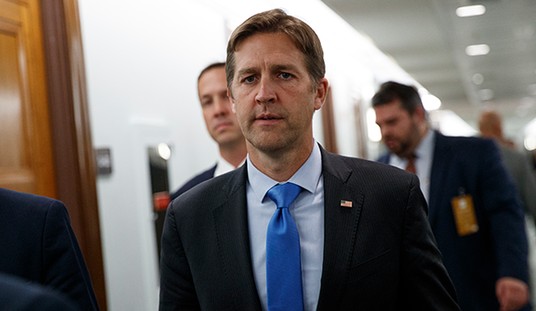In 2010, Ohioans longing for genuine reform after decade upon decade of virtually uninterrupted tax-and-spend government finally thought they had found their change agent in former congressman John Kasich.
The state hadn’t seen anything resembling conservative governance since the first year or so of Republican George Voinovich’s gubernatorial reign during the early 1990s. But just 15 months after what had been an impressive start, Voinovich began pushing for tax increases on booze and cigarettes. By the end of his second year, he and pliant Republican legislators were plotting soak-the-rich schemes. In 1996, Voinovich was the only Republican governor in America to receive a fiscal policy “F” from the Cato Institute. By that time, Republicans in the General Assembly were complaining that they needed equal time to respond to Voinovich’s annual left-leaning State of the State addresses.
Under Bob Taft, things got even worse. After treading water during his first term, Taft in 2003 seriously sullied his ancestors’ Republican and conservative legacies by ramming massive tax increases through the General Assembly. An alleged tax reform effort in 2005 barely nibbled around the edges while adding a horrid gross receipts levy to the mix. When a scandal-plagued Taft left office, Ohio’s business tax climate was fourth-worst in the nation.
Before the Voinovich era, Democrat Dick Celeste raised the income tax by 90 percent. After the Taft era, Democrat Ted Strickland allowed the spending spree which his predecessor had enabled to continue unchecked, even as the state’s economy went into free-fall. Over 400,000 jobs, a shocking 8 percent of statewide employment, disappeared.
The time could not have been more ripe for a genuine conservative to come in and not only right the ship, but also return Ohio’s economy, after over 30 years of watching other states pass it by, to a prosperous trajectory.
Kasich certainly looked like the guy who could and would do it. During the 2010 Buckeye State governor’s race, he repeatedly told audiences that “I was in the Tea Party before there was a Tea Party,” and with good reason. While in Congress, he “was the chairman of the U.S. House of Representatives’ Budget Committee in 1997 that balanced the nation’s budget for the first time in more than 30 years.” He selected State Auditor Mary Taylor as his running mate largely because, while a state representative, she had defied the establishment by voting against Taft’s tax increases.
Despite passive-aggressive obstruction by the state’s Republican Party chairman and a desperate, media–assisted smear campaign by Strickland, Kasich become the first challenger to defeat a sitting Buckeye State governor in 36 years.
To his credit, Kasich did right the fiscal ship. His first two-year budget closed the projected $8 billion budget gap Stickland had left behind without increasing taxes. He enthusiastically signed a repeal of the state’s death tax. He made some progress cutting an overgrown bureaucracy. The state’s economy responded by generating over 90,000 jobs and growing by 2.9 percent during his first 12 full months in office. Both figures significantly outpaced the averages in the rest of the U.S.
Unfortunately, Kasich and state Republicans suffered a serious political setback in November 2011, when voters decisively torpedoed their attempt to enact collective bargaining reforms analogous to those successfully implemented by Governor Scott Walker in Wisconsin. Since then, the Governor has been a different person, and his policies have veered into places even George Voinovich and Bob Taft wouldn’t go.
His reaction to the fracking boom has been to propose a 400 percent increase in the severance tax while ramping up the rhetoric against “big oil.”
After opposing Obamacare, Kasich turned around and championed Medicaid expansion. He spent months trying to shame opponents into supporting him by playing the “Christian” card, i.e., “You’re not really a Christian if you won’t support this.” When legislators still balked, he went around them and took his case to the Controlling Board, an obscure state agency which normally deals with completely unrelated matters. When it looked like the sitting members of the Controlling Board wouldn’t do his bidding, the Governor had the House Speaker arbitrarily replace two members who planned to oppose the move with supportive lackeys. The Wall Street Journal correctly described Kasich’s heavy-handed move as “lawless.” Washington isn’t the only place where tyranny (“arbitrary or unrestrained exercise of power; despotic abuse of authority”) has gained a foothold.
As with Voinovich and Taft, Kasich’s budget unsustainably expands spending by an anticipated average of over 5 percent per year through fiscal 2015. Half of that would still be way too much.
Ohio’s economy has responded as one would expect: poorly. Despite the strong head start, statewide payroll employment growth during the 37 months which ended in February now trails the rest of the nation — and almost 40 percent of that growth has been in Metro Columbus, where payrolls have grown at triple the rate seen in the stagnating rest of the state. In the three years ended in January, the statewide labor force outside of Columbus shrunk by 64,000.
Luckily for Kasich, the Democrat opposing his reelection is best referred to as the Wreck That Is Edward Fitzgerald. Thus, he will probably win reelection even after dissing the people who gave him his victory margin the first time around.
In late March, while touting Ohio’s fictional “economic turnaround,” Kasich refused to answer Chris Wallace’s repeated questions on Fox News Sunday about whether he was considering a presidential run in 2016. I take that evasiveness to mean that he’s serious about it. One year of strong governance followed by several lousy ones doesn’t get it, John.









Join the conversation as a VIP Member